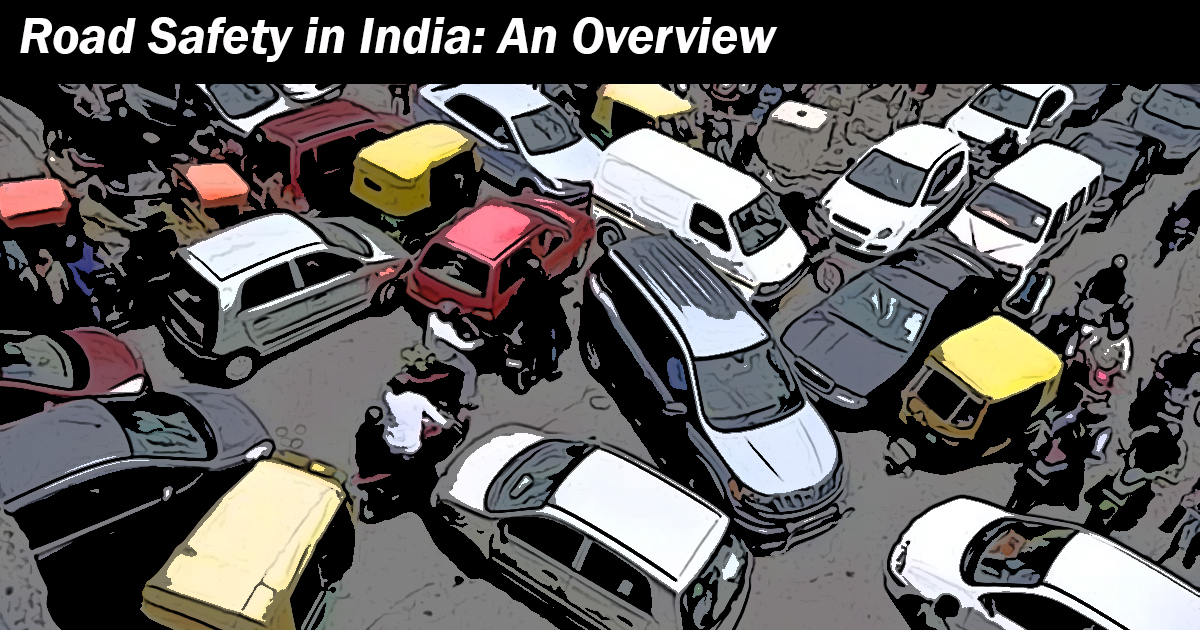
Context:
The “India Status Report on Road Safety 2024,” developed by the TRIP Centre at IIT Delhi, highlights the uneven rates of road traffic fatalities across Indian states. Road traffic injuries continue to pose a significant public health challenge in India, with minimal progress in reducing fatalities despite advances in other areas.
Key Findings:
- In 2021, road traffic injuries were the 13th leading cause of death in India and ranked 12th in terms of health loss, measured in Disability-Adjusted Life Years (DALYs).
- In six states (Haryana, Jammu & Kashmir and Ladakh, Punjab, Rajasthan, Uttarakhand, Uttar Pradesh), road traffic injuries were among the top 10 causes of health loss. Most Indian states are unlikely to meet the UN Decade of Action for Road Safety target to halve traffic fatalities by 2030.
- Only eight states have conducted safety audits on more than half of their National Highway lengths. Many states lack essential traffic safety measures, such as proper signage, markings, and traffic calming mechanisms.
- Helmet usage in rural areas is alarmingly low, and trauma care facilities are inadequate to handle the burden.
Road Accident Statistics in India:
- Although India has just 1% of the world’s vehicles, it accounts for around 10% of all traffic-related fatalities, according to the World Bank.
- The severity of road accidents (measured by deaths per 100 accidents) has increased from 28.2% in 2012 to 36.5% in 2022.
- National and state highways, which comprise only 4.9% of the total road network, accounted for 56.1% of road crashes and nearly 61% of road fatalities.
Causes of Road Accidents:
- Weak enforcement and governance: Lengthy legal processes, lack of deterrence, and corruption among traffic police have hampered road safety efforts.
- Poor infrastructure: Features like potholes, inadequate signage, poorly marked lanes, and insufficient lighting contribute to accidents.
- Lack of dedicated resources: Road safety is often treated as a secondary responsibility for many officers, leading to neglect.
- Non-compliance with traffic rules: Many accidents occur due to the non-use of helmets and seat belts, overloaded vehicles, or unlicensed drivers.
- Budget car designs: Many affordable cars in India lack essential safety features, such as airbags.
- Overcrowded roads: The congestion of roads with vehicles, pedestrians, and animals exacerbates the problem.
Impacts of Road Accidents:
- Economic burden: Road crashes cost India around 5-7% of its GDP annually.
- Loss of life: In India, a person dies in a road accident approximately every 3.5 minutes.
- Disproportionate impact on the poor: Financial loss due to road accidents can equate to over seven months’ income for low-income households, compared to less than a month’s income for wealthier families.
- Rising out-of-pocket expenses: The lack of adequate health insurance coverage increases medical and non-medical expenditures, driving many families into poverty.
Road Safety Initiatives in India:
- National Road Safety Policy (2010): The policy emphasized improving road infrastructure, stricter enforcement of traffic rules, and enhancing emergency medical services.
- Supreme Court Committee on Road Safety (SCCoRS): Established in 2014, it guides states in reducing road fatalities.
- Motor Vehicles Amendment Act (2019): This law introduced harsher penalties for traffic violations, such as speeding and drunk driving, and imposed stricter measures for juvenile offenders.
- Integrated Road Accident Database (iRAD): This system analyzes the causes of road accidents and suggests interventions.
- Road Safety Audits (RSA): Mandated safety audits for National Highways are carried out by third-party experts at various stages of highway construction and operation.
- Good Samaritan Law: This law protects individuals who assist accident victims from legal harassment.
Global Road Safety Initiatives:
- Brasilia Declaration on Road Safety (2015): India committed to the UN’s Sustainable Development Goal (SDG) 3.6, which aims to halve road traffic fatalities by 2030.
- UN Decade of Action for Road Safety (2021-2030): This initiative seeks to reduce global road traffic deaths and injuries by at least 50% by 2030.
- Bloomberg Initiative for Global Road Safety (BIGRS) 2020-2025: This program targets low- and middle-income countries, implementing measures to reduce road crash fatalities.
Way Forward:
- Increasing awareness: Public campaigns are needed to raise awareness about road safety and the need for proper road usage.
- Stricter law enforcement: Ensuring standardized driving tests, increasing political commitment, and integrating road safety into broader developmental policies are crucial.
- Improved road infrastructure and emergency care: Focus should be on better road designs, safety features, and improved trauma care systems to handle post-accident cases effectively.




